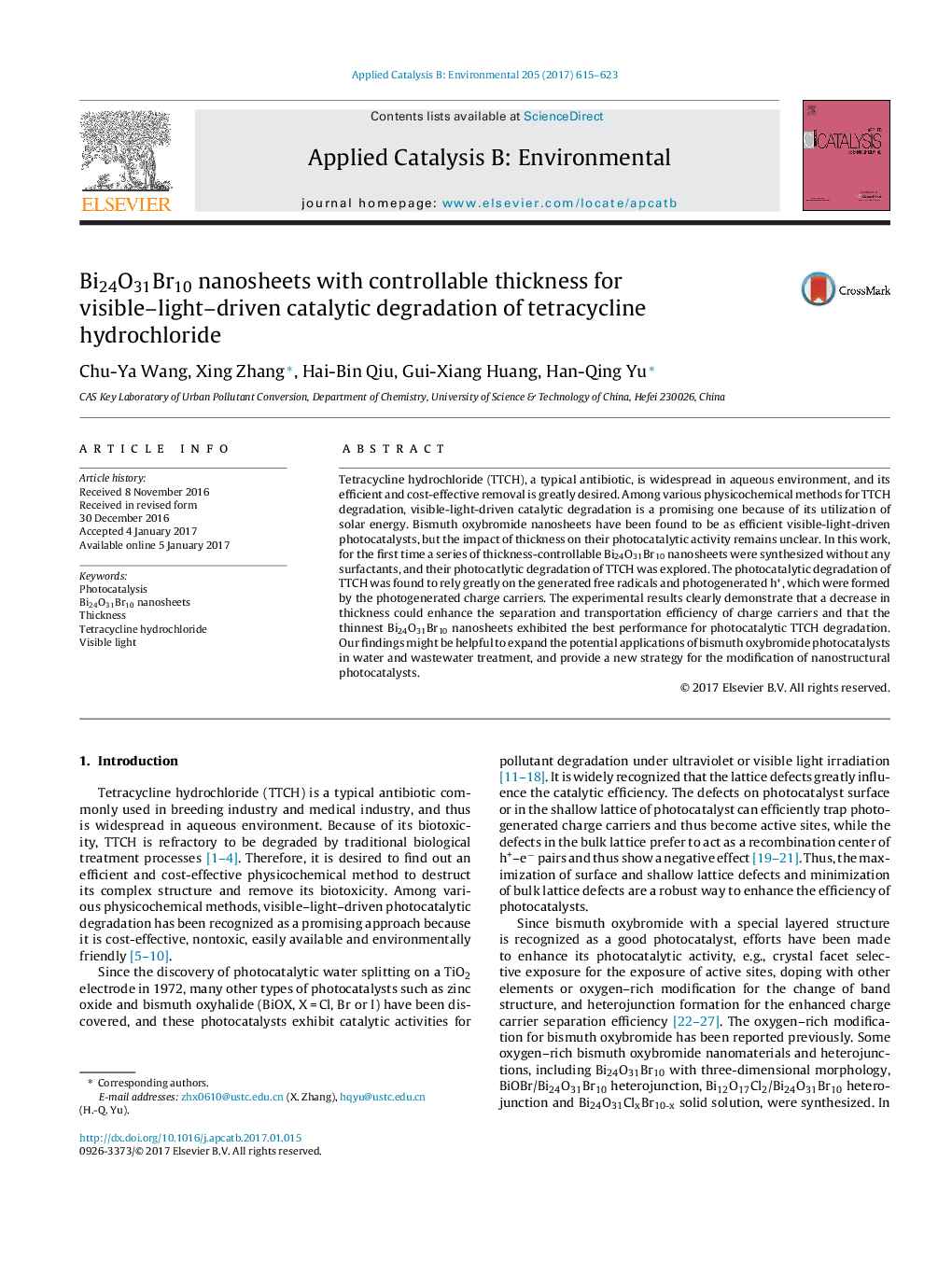| کد مقاله | کد نشریه | سال انتشار | مقاله انگلیسی | نسخه تمام متن |
|---|---|---|---|---|
| 6454402 | 1418815 | 2017 | 9 صفحه PDF | دانلود رایگان |

• Bi24O31Br10 nanosheets with different thicknesses were successfully synthesized.
• The thinnest Bi24O31Br10 nanosheets exhibited the best photocatalytic performance.
• Mechanism behind the enhanced photocatalytic activity was elucidated.
• Photocatalytic degradation mechanism of tetracycline hydrochloride was established.
Tetracycline hydrochloride (TTCH), a typical antibiotic, is widespread in aqueous environment, and its efficient and cost-effective removal is greatly desired. Among various physicochemical methods for TTCH degradation, visible-light-driven catalytic degradation is a promising one because of its utilization of solar energy. Bismuth oxybromide nanosheets have been found to be as efficient visible-light-driven photocatalysts, but the impact of thickness on their photocatalytic activity remains unclear. In this work, for the first time a series of thickness-controllable Bi24O31Br10 nanosheets were synthesized without any surfactants, and their photocatlytic degradation of TTCH was explored. The photocatalytic degradation of TTCH was found to rely greatly on the generated free radicals and photogenerated h+, which were formed by the photogenerated charge carriers. The experimental results clearly demonstrate that a decrease in thickness could enhance the separation and transportation efficiency of charge carriers and that the thinnest Bi24O31Br10 nanosheets exhibited the best performance for photocatalytic TTCH degradation. Our findings might be helpful to expand the potential applications of bismuth oxybromide photocatalysts in water and wastewater treatment, and provide a new strategy for the modification of nanostructural photocatalysts.
Figure optionsDownload high-quality image (180 K)Download as PowerPoint slide
Journal: Applied Catalysis B: Environmental - Volume 205, 15 May 2017, Pages 615–623